
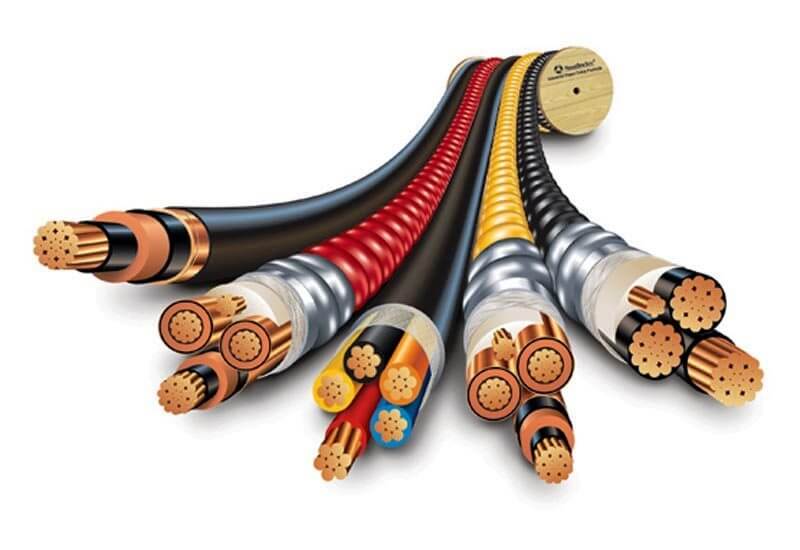 Cable and cable connector Q & A
Cable and cable connector Q & A
What are the different elements of cables? Basic knowledge about cable components and structural details
Conductor
The conductor is a load element made of aluminum or copper. It has a specific cross -section with a specified rated value. The resistance/kilometer is within certain specified restrictions.
Electric insulation (electronics)
Provide insulation on the conductor to isolate them. Various types of insulation materials used are: PVC, XLPE (cross -linked polyethylene), rubber, etc.
The insulation conductor is called the core wire. One cable may have one or more core wires. In the multi -core cable, the core wire spiral twisted together.
In the dual -core, three -core, and multi -core cables, the core wire is layed together at a suitable twisting distance; the outermost layer is the right hand twist direction, and the subsequent layers are paved with the opposite twist.
Internal care cover
The cable with a twisted wire core has an internal care cover for squeezing or entangled.
Make sure the shape is round as round. The application of the internal cover is closely fitted with the laid core wire, and it should be removed without damaging the insulation.
The thickness of the internal care cover is specified in the relevant standards and is based on the calculation diameter of the core material.
Armor
Apply a wire, strip, or tape to the cable to protect the cable from penetrating, squeezing pressure, and damage to rodents or boring insects. It is called armor.
In the case of a single -core cable, an armor is applied on the insulation layer, and the inner cover is applied to the inner cover with the dual -core, three -core, and multi -core cable.
outer care cover
Outgregora/sheaths are usually squeezed plastic covering layers on paving or armor cores. PVC is a common cover material.
Outgregations provide mechanical, heat, chemistry and environmental protection.
The outer condom is not distributed in electrical function. The color of the outer sleeve is usually black.
What are the different cable types and categories?
The cable can be divided into multiple types according to the following classification combination:
● Based on voltage rated values, such as low -voltage, high voltage, ultra -high voltage cables, etc.
● Based on conductor materials, copper conductor or aluminum conductors.
● Based on insulation materials, such as polyvinyl chloride insulation, rubber insulation, cross -linked polyethylene insulation, etc.
● Armor or non -armor cable
● According to the sheath material, such as PVC cover, rubber cover, lead cover, aluminum sheath, etc.
● Based on the core number, it is divided into single -core, two -core, three -core, three -core, three -core, quad -core, multi -core, etc.
● Cross -section based on conductor.
● Based on the type of conductor, solid, twisted, fan -shaped, etc.
It can be clearly seen from the above that the type of cable will be very different due to the various factors involved.
In order to facilitate identification and description of cable types, some form of type names are usually used.
With these names, in a few words, you can more easily convey the correct type of cable.
Please read another: Selection Guide of the Cable Sealing Connection
XLPE cable and PVC cable
The important difference is the additional toughness of the insulation material, especially to withstand high temperature without deformation due to mechanical pressure.
The better physical characteristics of XLPE can reduce the thickness of the insulation, thereby reducing the overall size of the cable.
The continuous rated temperature increases from 70 ° C to 90 ° C, and the short -circuit rated temperature of the cable increases from 160 ° C to 250 ° C.
Generally speaking, the XLPE insulation cable is a competitive alternative to industrial PVC cables and public power supply system paper insulation cables.
What is cable shielding and why?
Only the phase voltage> 1 KV cable requires electrical shielding and realizes the following functions.
● The potential grading and restrictions of the electric field
● The conduction of charging and discharge current
To meet these functions, blocking usually includes a combination of conductive layers and metal elements.
The sensitivity of the electrical stress and the insulation material to the local discharge determines the shielding type of the insulation of the electrical layer.
When it is higher than a specific voltage, in order to control the electric field in the insulating layer, the semiconductor shielding layer is applied to the conductor and insulating layer.
Provide a medium of a dielectric field that is shielded in the cable structure and carries the current during short circuit. In this way, any discharge caused by air gaps adjacent to the insulation can be eliminated.
The expansion coefficient of polyethylene and EPR is about ten times that of copper or aluminum. When the conductor is at the highest working temperature of 90 ° C, a sufficient gap between the insulator and the surface of the conductor will form discharge.
By applying semiconductor layers on the conductor, the discharge point and any other points formed around the conductor can be eliminated when the conductor is bent.
Similarly, you can use shielding on the insulation layer to eliminate any discharge caused by the air gap between the stacked iron core.
In the early 1960s, semiconductor tapes were applied to conductors, but have been replaced by extrusion layers since then.
This has the advantage of providing smoother surfaces, and when it fills the gap between the wires, a circular envelope is formed around the conductor.
By reducing the concentration of magnetic lines around the single wire, the electrical stress around the conductor is reduced by 10% to 15%.
The semiconductor layer is compatible with the insulator and bonded, and the typical nominal thickness is 0.7 mm.

What is a FRLS H cable?
Low smoke and low halogen cables have improved flame retardant characteristics, and there are fewer smoke and toxic gas discharged.
Special features
● Reduce the spread of flames
● Low smoke emissions
● Low acid gas produces
The formula mainly used in the FRLS compounds for protective cover materials requires special components.
These cables may have a PVC or XLPE insulating layer, but the shenthes are based on PVC. After proper composite to meet the requirements of the FRLS H.
What is the general packaging method followed?
Cables are usually installed on wood/steel rolls. There is an arrow on the drum flange to indicate the direction of the rolling cylinder.
If the roller rolled in the opposite direction, the cable will be expanded and loose.
The storage method of all barrels should leave enough space between them for air circulation.
In any case, the barrel should not be "flat", that is, the flange level is placed.
What are the different conductor materials used as conductives?
The conductor is a load element made of aluminum or copper. It has a specific cross -section with a specified rated value. The resistance/kilometer is within certain specified restrictions.
Please also read: The cable shield should not be grounded at the on -site equipment?
What are the standards for selecting specific types of conductors?
The selection of conductors depends on various parameters, such as load flow, system voltage, voltage drop, flexibility, shape and economy.
The most commonly used metals are copper and aluminum.
The resistance (R) of the conductor (R) is inversely proportional to the cross -sectional area.
R = þ xl / A
Where
= = resistivity of the conductor material.
L = conductor length.
A = the cross -sectional area of the conductor.
What are the different types of conductors?
The conductor is divided into different grades, and the flexibility of the conductor increases with the increase of the number.
These are as follows:
1. Fixed installation cable: Class 1 and 2
2. Flexibility: Category 5 and 6
Solid conductor (Class 1)
The conductor is composed of a single flat line or tin -plated copper wire, and its cross section is round.
The solid aluminum conductor with a size of 1.5 mm2 to 16 mm2 has a circular cross section. The size of 25 square mm and above can be a round or alien cross -section.
Timing round non -compact conductor (class 2)
The conductor is made of ordinary or tin -plated copper or ordinary aluminum.
The number of wires in the conductor is not less than the corresponding minimum number specified in the standard.
Giggle -colored circular conductor and alien conductor (class 2)
The conductor is made of ordinary or tin -plated copper or ordinary aluminum.
The number of wires in the conductor is not less than the corresponding minimum number specified in the standard.
Soft conductor (Category 5 and 6)
The conductor consists of ordinary or tin -plated alnexions.
The diameter in any conductor does not exceed the appropriate maximum value given in the standard.
What are the different types of insulating materials?
The important feature of the insulation of the cable.
What is thermoplastic and thermosetry materials?
Provide insulation to isolate each core.
The insulation material for applications must fully play a role within the specified temperature range, and its dielectric strength should be sufficient to withstand electrical stability.
Cable insulation should have:
● Takuyuya strength
● Low -profile electric constant
● Good mechanical performance
● Anti -aging
● High temperature resistance
The insulation material is divided into thermoplasticity or thermosett . Thermoplastic materials will lose shape when heating. Despite heating, heat solid materials can still maintain its shape.
Various types of insulation materials used are: PVC, XLPE, rubber, impregnated paper, etc.
Polyethylene (PVC)
Polyvinyl chloride (PVC or ethylene) is a thermoplastic plastic. The PVC compound is a standard insulating material for 11,000 volt or lower cables and the shestons of all cables.
PVC complex is a mixture of PVC resin, plasticizer, filler, stabilizer, lubricant, and pigment. The number and type of each component determine its characteristics.
Wide electrical, physical and chemical characteristics are possible.
PVC has good electrical properties. It is tough, refractory, humidity, and wear resistance. The tolerance of ozone, acid, alkali, alcohol, and most solvents is also sufficient.
PVC can make oil -resistant and gasoline.
The disadvantages of PVC are the high and loss factor of the dielectric constant.
Losses of plasticizers can also cause hardening and cracking.
Lingjianjin chleres
The cross -linked polyethylene (XLPE) is a thermal solution material. It is made by compounding PE (polyethylene) with crosslinkers (such as organic peroxide).
Polyethylene molecules "cross -linking" to form mutually connected networks. The term "solidification" and "vulcanization" are also used for "cross -linking".
Elasticity
Elastic materials are used for insulation and protective cover. They are mainly used in places where products must be particularly flexible.
Today, the cable industry can use a variety of elastic bodies.
This makes it possible to make a compound with specific performance, such as wear resistance and oil resistance, weather resistance and heat resistance, and flame retardability, as well as good overall electrical and mechanical characteristics.
In recent years, the importance of classic elastic materials has declined.
Instead, synthetic elastic bodies produced by ethylene and acrylic co -concentrations are constantly looking for new applications in cable engineering. Such a cluster is usually called EPR.
rubber is the first insulation material for cable manufacturing, but it has allowed other insulating materials, such as paper, PVC, XLPE, etc.
Rubber is still considered to be the preferred insulating material for flexible cables and cables that require very small curved diameter.
Paper
Paper belts with specific thickness and appropriate width are wrapped around the conductor. The thickness of the combined insulation layer depends on the rated voltage of the cable. Paper insulation core uses a large amount of impregnated non -drained compounds to dry and impregnate.
What are the effects of conductors/insulation shielding and materials used?
The role of conductor/insulation screen
The conductor shield is a layer of semiconductor material. The conductivity of semiconductor materials is not enough to become a conductor, but it does not inhibit voltage.
" smooth " the surface irregularity of the conductor. The conductor shields the same voltage inside the insulation . Industry specifications define the performance of conductivity shielding. Good insulation shielding and insulating squeeze together.
This insulation shielding consists of two parts. These components are squeezing (auxiliary) shielding and metal (main) shielding.
Squeeze shielding consists of a semiconductor layer similar to a conductor shielding. It makes the voltage outside the insulator the same.
Primary shields can be composed of metal belt, discharge line or concentric neutral (CN) line. The primary shielding ground can cause the exterior of the insulation ground to generate voltage. The shielded copper is usually exposed, but may also be coated with lead or tin.
Some primary shields are composed of discharge lines and tape. Aluminum and lead can also be used as shielding.
There are two purposes in the concentric neutral line. They are used as metal components and neutral circuit currents with insulating shielding. Their cross -sectional area must be determined to be used as a neutral conductor.
Polyethylene insulation cable
The internal conductive layer consists of a PVC compound with high -carbon black content.
For external electricity layers, it is preferably covered with conductive tape.
PE or XLPE insulation cable
Because it is more sensitive to local discharge, the reliable and good bonding gap and the induced cavity adhesion with the no -cavity of the conductive layer are of the most important significance.
The internal conductive layer is composed of polymer compounds, adding charcoal black to make it conductive.
and the external conductivity layer is formed by semiconductor compounds with semiconductor tape.
Cable Connect Questions
What is a cable connector?
A device designed to allow cables to enter electrical equipment, which provides a combination of sealing, fixing and earplugs, bonding, grounding, insulation, strain or all these combinations.
The cover should maintain the overall integrity of the shell they installed.
How to choose a cable connector?
Select the connector at the following points
1. Cable type
2. Cover size
3. Application entrance type /thread specifications
4. Require entry protection.
5. Materials
What type of cable and how to use a cover?
Non -armor : Non -armored cables need to be seal outside the stuck to provide inlet protection and maintenance.
Armor : You need to clamp the mechanism to terminate the armor of armor by mechanical and electrical.
The cover usually needs to be protected by a sealing outer cover, and it is maintained by clamping the cover.
What types are there?
1. Bronze indoor cover
2. Bonato -outbound cover
3. Bonwarn collection non -armor cable joint
4. BOC prevent wind and rain pressure cover
5.PG thread cover:
6. Industrial type cover
Describe the type of the connector?
Bonwood indoor cover
Picture
● This cover is suitable for various types of cables, whether plastic, rubber, metal or any other types of cables.
● Application: Dry room, suitable for all types of SWA cables, plastic or rubber cover cables.
● Bonato -indoor sealing sleeve is suitable for single -line armor, plastic or rubber cover cable. It is recommended to use the cover to provide additional protection.
● Cable type: steel wire armor.
● Amour Clamp: Two parts of amour lock.
Bonwood Outbound Cover
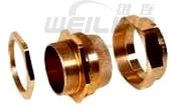
It uses amazing high -quality materials and can be used for outdoor or indoor applications, with various types of sheets or non -shelter cables.
● Berbal and outdoor covers widely used in single -line armor.
● Plastic or rubber cover cable. The end -connecting and fixed cable armor and external sealing cable protective cover to ensure mechanical strength and grounding continuity.
● The CW brass cover also provides overall grounding facilities.
● It is recommended to use a PVC cover to provide additional inlet protection
Application:
a) Outdoor or indoors, for all types of SWA cables, plastic or rubber cover cables.
b) The most suitable for SWA and rubber plastic (elastic) sheath cables.
c) Used under dry room conditions.
d) No loose components, easy to install.
e) Save time and money.
● Cover size: 20 mm to 75 mm (S and L)
● Accessories: Earth Tags, PVC cover, Neo Prime rubber and LSF rubber, PVC cushion, and bronze locking nut.
● Cable type: steel wire weaving armor.
● Armored clamping: three parts (with lock tight nuts).
Bonwaries are connected to non -armor cables
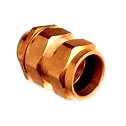
● Nickel -plated or natural brass A2 cable sealing sleeve is used for various non -armor or rubber cover cables.
● Bronze indoor cable sealing sleeve is suitable for all types of non -armor cables, plastic or rubber cover cables.
Application:
1. For non -armor elasticity and plastic insulation cable.
2. You need to provide sealed indoor and outdoor on the cable outer condom.
● Size: Public System -20mm to 75mm (S /L)
● Accessories: ground label, PVC cover, Neo Prime rubber and LSF rubber, PVC cushion, and bronze lock nut.
● Cable type: non -armor
Bonatopia anti -wind and rain presses
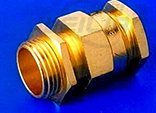
Unlike other types of cable sealing sleeves, this type of cable sealing sleeve can be accurately used for various types of plastic or rubber cover cables of single armor.
Once the seal set is fixed to the required wires and wire components, this type of cable sealing sleeve is known for its uninterrupted service.
● Suitable for SWA or rubber cover cables.
● The cushion of the cable is sealed in the external seal, which can be used under most climate conditions.
● Wind prevention and waterproof.
● Design a separate armor lock ring. Can provide overall grounding device.
● Cover size: 20 mm to 75 mm (S and L)
Application
1. Outdoor or indoors, for single -layer armor, all types of SWA cables, plastic or rubber cover cables.
2.E1W GLAND is a kind of wind -proof, rainproof and water -resistant cable seal set
● Cable type: steel wire armor
● Armored clamping: three parts of armored locks
● Sealing technology: compressed displacement
● Sealing area: internal care cover and outer care cover
PG thread cover:
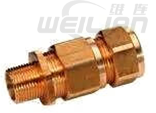
The nickel -plated PG thread cable sealing sleeve is a customized thread seal cover that can meet the needs of various industries.
In addition to the round -headed PG thread cable sealing sleeve, it can also provide hexagonal sealing sleeves or any other spherical rectangle or any other size PG thread cable sealing suit according to the customer's specifications.
Industrial Cable Connection
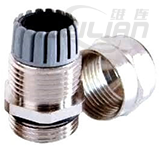
Swilled sealing sleeve is suitable for steel wire woven armor, plastic or rubber cover cable.
end -connecting and fixed cable armor and external sealing cable guards to ensure mechanical strength and grounding continuity.
● It is recommended to use a PVC cover to provide additional inlet protection
● Cable type: steel wire woven armor
● Armored clamping: three parts (with lock tight nuts)
● Sealing technology: compression.
● Smoral sealing for steel belt armor, plastic or rubber cover cable. The end -connecting and fixed cable armor and external sealing cable protective cover to ensure mechanical strength and grounding continuity.
● It is recommended to use a PVC cover to provide additional inlet protection
● Cable type: steel belt armor
● Armored clamping: three parts (with lock tight nuts)
● Sealing technology: compression.
What is the difference between a single compression and double compression?
● Double cover provides additional support for heavy armor cables entering or leaving the panel, and the single -pressure cap is used for light armor cables.
● Ordinary cable joints are also called single -pressure cable joints. As the name implies, when you tighten the cover, clamp or compress at a [lace (that is,) at the cable armor. Moisture and corrosive steam may enter the sealing sleeve to enter the cable.
● In the dual compression cover, compression occurs on the cable armor and internal care cover. This is a bit like two seals. Therefore, the opportunity for moisture or steam to enter is minimized. Therefore, these sealing sleeves are also called windy -rain -resistant cable sealing sets or fire -resistant cable seals.
● The basic difference between single compression and dual compression is that the single compression is not a cone and a cone ring.
The mechanical support of the cable is only chlorherye rubber sealing, when you tighten the cable.
● In the dual camping cover, the mechanical support of the cable is only cone and cone ring. When we cover the cover, the cable armor is located on the cone, and the cone ring acts as the armor lock.
● Use single -compressed and double -compressed glands based on regional classification. Those who belong to the petroleum and natural gas industries can easily understand regional classification.
● In areas of 0 (IIC) in areas with obvious existence of hydrocarbons, dual compression cents are used, because the flame path of the double compression clock is much more than the single compressed clock.
● The logic behind this is that if any explosion occurs in the motor wiring box, the flame should not be able to use cable sealing to prevent the risk of fire, but if there is no hydrocarbon compound, there is no fire risk (IIA/Iib) use (IIA/IIB) Single pressure cover.
● It has nothing to do with mechanical strength. Even in the lighting device used in the IIC area, a double compression cap is used.
What parts of the dual compression cover?
The parts of the dual compression cover -
● Connect
● Cover the body nut
● Conevant
● cone ring
● Shoppine rubber seal
● Rubber cushion ring
● Check the nut
What parts of the single -pressure compression cover is composed of?
Single COMP component
● Connect
● Cover the body nut
● Shoppine rubber seal
● Rubber cushion ring
● Check the nut
● Flat mats

